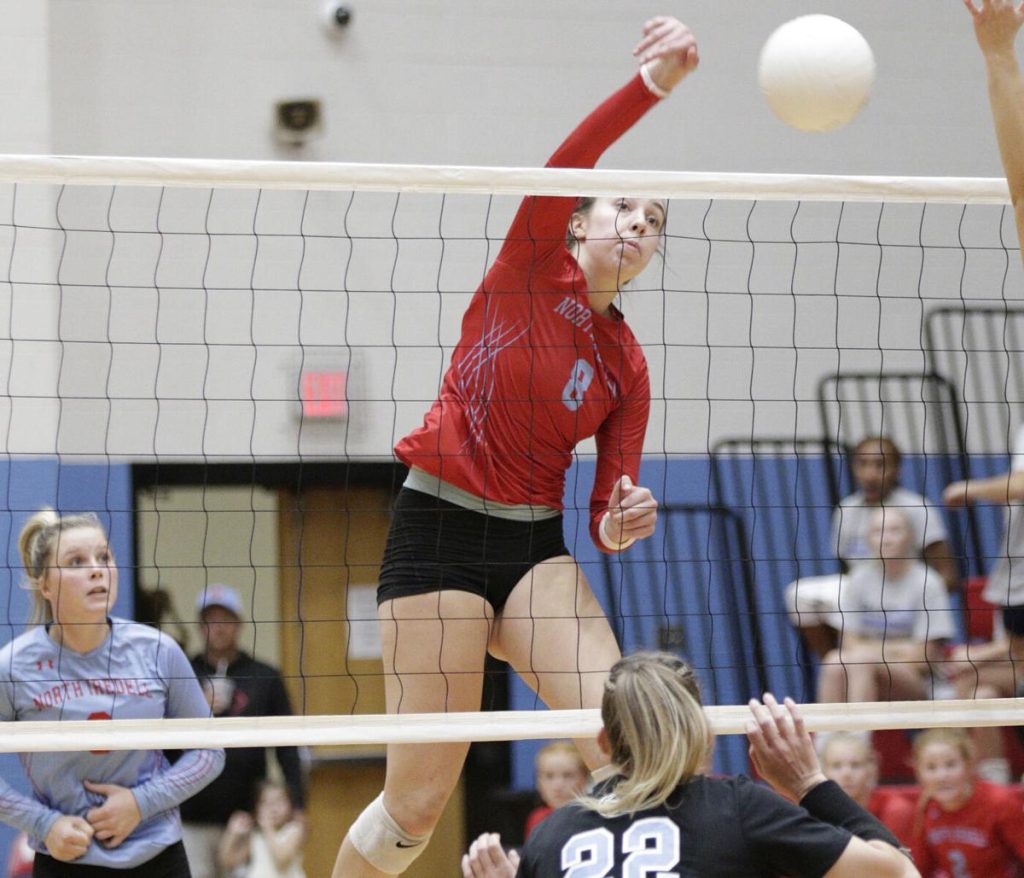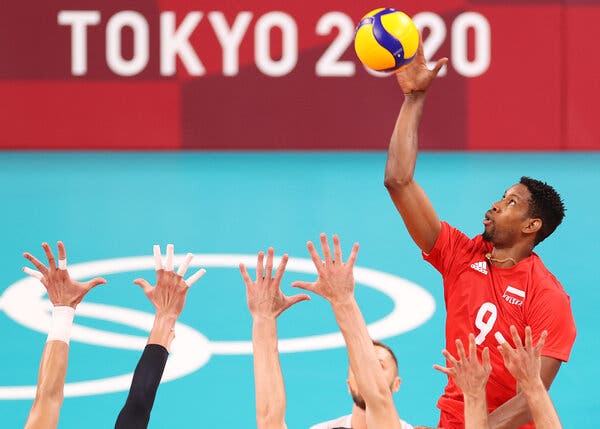The Ultimate Guide to High School Volleyball Net Height
A standard high school volleyball net measures 7 feet 4 1/8 inches or 2.24 meters in height. Volleyball nets are designed to be sturdy and durable, with a mesh of 4-inch squares that allows the ball to pass through easily, while still providing a visible and measurable barrier for players.
High school volleyball is a popular sport that is played across the country, both by boys and girls. It is a fast-paced game that requires skill, speed, and agility. The height of the net is an important factor that influences the gameplay and the level of competition.
Standard high school volleyball nets measure 7 feet 4 1/8 inches or 2. 24 meters in height, and they are made of high-quality materials that ensure they can withstand constant use and wear and tear. Whether you are a student-athlete, a coach, or a parent, understanding the rules and regulations of high school volleyball can help you enjoy the game and appreciate its nuances and challenges.

Understanding Volleyball Net Height Standards And Regulations
Have you ever wondered how tall a standard high school volleyball net is? Volleyball net height is crucial to ensure competitiveness, fairness, and safety in the game. In this section, we’ll explore how net heights are regulated, measured, and enforced.
What Are The Standard Net Heights For High School Volleyball?
- In high school volleyball, the women’s net height is set at 7 feet, 4 1/8 inches.
- For men’s volleyball, the standard net height is 7 feet, 11 5/8 inches.
- The net heights for high school volleyball are determined by the national federation of state high school associations (nfhs) and must comply with Usa volleyball rules.
How Are Net Heights Measured?
- Net heights are measured from the center of the playing area to the top of the net tape across the width of the court.
- The height should be checked and adjusted before every match and should be marked on the net with a strip of adhesive tape.
- The height of the net should also be visually confirmed by the official before the match, during timeouts, and at the end of the set.
Why Is It Important To Have Standardized Net Heights?
- Standardized net heights ensure a consistent level of play and fairness for both teams.
- It promotes safe play by reducing the risk of injuries to players, particularly when spiking or blocking/hitting the ball.
- Uniform net heights also help players refine their skills and techniques, making the game more thrilling.
What Are The Consequences Of Not Adhering To Net Height Regulations?
- In high school volleyball, a team found violating the net height regulations will receive a penalty point.
- Repeated violations may result in disqualification of the team or financial penalties.
- All players and coaches are expected to understand and adhere to the rules of net height to ensure a competitive and fair playing field for everyone.
High school volleyball net height regulations are crucial to ensure fairness, safety, and a competitive playing field. All players, coaches, and officials should be familiar with the standard net heights, how it is measured, and the consequences of not adhering to regulations.
So if you want to dominate the court, get your net height right!
Factors That Impact Net Height In High School Volleyball
What Are The Factors That Determine The Optimal Net Height?
Several factors contribute to determining the optimal net height in high school volleyball. These factors include:
- Regulations: The national federation of state high school associations (nfhs) sets the guidelines and regulations for net height in high school volleyball.
- The height of the players: The optimum net height depends on the height of the players who will be playing volleyball.
- Skill level: Skill level is an important factor that determines the optimal net height. Players with more skills require higher nets to provide a more challenging game.
- Gender and age: The gender and age of players also affect the net height. Male players are generally taller than female players. The official net height for high schools playing boys’ volleyball is 7 feet and 11 5/8 inches (2.43m), whereas the official net height for high schools playing girls’ volleyball is 7 feet and 4 1/8 inches (2.24m).
How Does The Skill Level Of The Players Impact The Optimal Net Height?
A player’s skill level influences the optimal net height. If players are more skilled, they need a higher net, and if they are less skilled, a lower net is ideal. Skilled players can handle a higher net height because they can jump higher and can hit the ball harder over the net.
On the other hand, lower net heights are appropriate for players with less skill since the ball is easier to hit over the net. The official net height in high school volleyball is 7 feet and 4 1/8 inches (2.
24m) for girls and 7 feet and 11/5/8 inches (2. 43m) for boys.
What Are The Differences In Net Heights Between Genders And Age Groups?
The net height varies between gender and age groups in the high school volleyball game. For girls who play high school volleyball, the official net height should be 7 feet and 4 1/8 inches (2. 24m). Conversely, the official net height for boys is 7 feet and 11/5/8 inches (2.
43m). The net height for players in different age groups may also differ; younger players tend to have the net set lower than older, more skilled players.
How Does Court Size Impact The Optimal Net Height?
Court size is another factor that affects the optimal net height in high school volleyball. The official dimensions for a high school volleyball court are 29 feet 6 inches wide by 59 feet long. These measurements are appropriate for both boys’ and girls’ volleyball games.
However, a larger court size may require a higher net height to balance the game. It is recommended to move the court boundary lines inward when the net needs to be lower.
Adjusting Net Height For Specific Situations
How Can Net Height Be Adjusted For Different Playing Surfaces?
Adjusting the height of the net is essential to promote fair gameplay and safety. Changing the positioning of the net is possible on all surfaces, including indoor and outdoor courts and even at higher altitudes.
Here are some ways you can adjust the net height on different playing surfaces:
- Adding or removing sand from the base of the poles is a practical way for the beach courts.
- Indoor courts usually use winches and pulleys to adjust the net tension and height.
- Outdoor courts may use guy wires and ropes to adjust the net tension and height.
- Adjustable net systems, which are mobile with wheels, can be set up on any surface.
- Portable volleyball sets are also another option to adjust the net height for recreational players.
What Adjustments Should Be Made For Indoor Versus Outdoor Games?
Whether the game is played indoors or outdoors, there are specific net height rules that must be followed. The team that wins the coin toss gets to choose their side of the court, which also determines the net’s height.
Here are some of the main differences in net height for indoor and outdoor games:
- In indoor volleyball, the net height is 7 feet, 11 5/8 inches (2.43 meters) for men and 7 feet, 4 1/8 inches (2.24 meters) for women.
- For outdoor volleyball, the net height is slightly higher at 8 feet (2.43 meters) for men and 7 feet, 4 1/8 inches (2.24 meters) for women.
- In indoor volleyball, the court is usually 18 meters by 9 meters. Compared with outdoor games, where the size of the court varies, the net height must be adjusted according to the court’s size.
What Adjustments Should Be Made For Games Played At High Altitude?
Playing volleyball at higher altitudes, where air pressure is lower, can affect gameplay. To adjust the game’s fairness, there are specific recommendations provided by the Federation International de Volleyball regarding the net’s height.
Here are some suggestions for adjusting the net height in high-altitude games:
- Between 1,000 and 2,000 feet above sea level, the net height should be raised by 1.3 cm.
- Between 2,000 and 3,000 feet above sea level, the net height should be raised by 2.5 cm.
- Above 3,000 feet above sea level, there are different rules based on the location of the game, and it is essential to refer to the fivb for the correct guidelines.
How Does Air Pressure Impact, Net Height?
Air pressure can vary significantly depending on the location of the game and elevation. Changes in air pressure can affect the net height and ultimately the game’s gameplay and fairness.
Here are some impacts of air pressure on the net’s height:
- When air pressure is high, the air density is high; this increases the air resistance and makes the ball less bouncy, which may make players use more force to touch the ball.
- Lower air pressure means lower air resistance and the ball travels faster. Therefore the game becomes more difficult for players to control and react to.
- Changes in air pressure affect the height of the net, and therefore the court should have a mechanism for adjusting the height of the net.
- Volleyball competitions in high-altitude areas adjust the net’s height according to the air pressure.
Tips For Choosing The Right Volleyball Net And Setting It Up
What Should You Look For When Choosing A Volleyball Net?
Before making a purchase, consider the following factors when choosing a volleyball net:
- Size: Ensure that the net complies with official height regulations, which are approximately 7 feet 4 inches for girls and 7 feet 11 inches for boys.
- Material: Look for quality materials such as polyester or nylon for durability and resistance against weather conditions.
- Mesh size: Choose a mesh size that would not allow the ball to pass through, with approximately 4 inches for indoor and 3.5 inches for outdoor courts.
- Brand and design: Consider reputable brands and a design that is easy to assemble.
How Should The Net Be Set Up To Ensure Correct Height And Tension?
For proper set up and adjustment of the volleyball net, follow these steps:
- Begin by attaching the net to each pole.
- Adjust the height of the net to comply with official regulations. Achieve this by positioning each pole at the correct height on either side of the court or adjusting the tension on the net for more minor adjustments.
- Ensure that the net is taut and has minimal sagging by securing it with tension ropes or ratchets.
- Test the tension by tapping the net on both sides to determine if it’s even.
What Tools Are Needed To Properly Set Up A Volleyball Net?
To set up a volleyball net, you will need the following tools:
- Volleyball net
- Volleyball poles
- Poles padding
- Anchors
- Tension ropes or ratchets
- Measuring tape
What Are Some Common Mistakes To Avoid When Setting Up The Net?
To avoid the following common mistakes when setting up a volleyball net:
- Not following official regulations: Ensure that the net is at the correct height and properly secured.
- Sagging net: Properly adjust the tension to avoid sagging.
- Uneven net: Check if the net is even on both sides.
- No safety measures: Use padding on the poles to prevent players from getting hurt.
- Poorly positioned anchors: Ensure that the anchors are at the correct angle and distance from the poles to prevent tipping or falling.
Best Practices For Maintaining And Inspecting Volleyball Nets
How Often Should Volleyball Nets Be Inspected?
As a standard practice, volleyball nets should be inspected before every match to ensure it is in perfect condition and ready for gameplay. However, a thorough inspection should be carried out at least twice a year.
Regular inspection and maintenance of volleyball nets will extend their lifespan and help you identify any potential hazards that can cause injuries. Here are the things to look out for during inspections:
- Check for tears or holes in the net.
- Ensure the net’s tension is correct.
- Inspect the cables, rings, and tapes for signs of wear or breakage.
- Inspect the poles and padding for damages or wear and tear.
- Inspect the antennae and its attachments.
- Ensure the net is of the correct height and width.
What Are The Signs That A Net Needs To Be Repaired Or Replaced?
Even with proper maintenance, a net will eventually reach the end of its lifespan. Here are a few signs that indicate that the volleyball net may need a replacement.
- Significant wear and tear, especially one that compromises the safety and integrity of the net.
- Unrepairable holes, frays, or snags.
- Breakage or damage to antennae, poles, or the net’s cable.
- Upgrade to an improved net design.
In general, an 8 to 10-year lifespan is expected for quality commercial volleyball nets used regularly.
How Can You Extend The Life Of Your Volleyball Net?
Maintaining your volleyball net is essential to extend its lifespan. Here are some best practices for maintaining and inspecting your volleyball net:
- Regularly inspect the net for damages and wear and tear.
- Avoid leaving the net out in direct sunlight or harsh weather conditions.
- Store the net in a dry and cool place to prevent mildew and mold growth.
- Properly tension the net to avoid sagging.
- Clean the net with soap and water.
What Should Be Done With Damaged Or Worn-Out Nets?
Once the net reaches an unrepairable state, it’s essential to dispose of it correctly. Some of the options available are:
- Recycling: The net can be recycled depending on the material.
- Donating the net: If the net is still in good condition, it can be donated to schools or recreational centers that may need them.
- Trash disposal: In the absence of the two options above, trash disposal is the last resort.
Keeping the above best practices in mind for maintaining and inspecting the volleyball net can save you money in the long run, as well as keep you and others safe during gameplay.
Frequently Asked Questions On How Tall Is A Standard High School Volleyball Net
What Is The Regulation Height Of A High School Volleyball Net?
The regulation height of a high school volleyball net is 7 feet and 4 1/8 inches.
How Do You Measure The Height Of A Volleyball Net?
The height of a volleyball net is measured from the center of the playing court to the top of the net.
Can The Height Of A Volleyball Net Be Adjusted During A Game?
No, the height of a volleyball net should remain the same throughout the game and should be checked before the start of each game.
Conclusion
Knowing how tall a standard high school volleyball net is crucial when it comes to playing the game. It’s not only important for the players but also for those setting up the court. From our extensive research, the standard height of a high school volleyball net is 7 feet and 4 1/8 inches for girls and 8 feet for boys.
Additionally, the tension of the net should be such that a ball dropped from a height of 6 feet should just pass through the net without any obstruction. It’s essential to note that regulations vary depending on the league, state, and country governing the sport.



